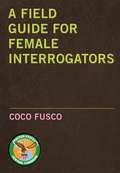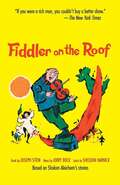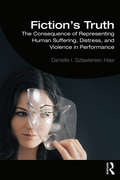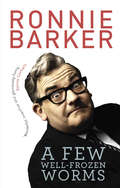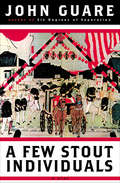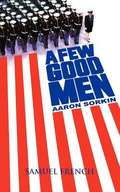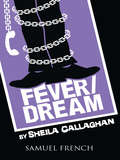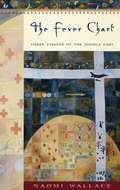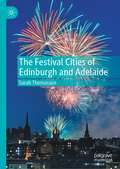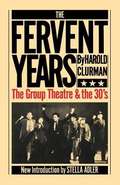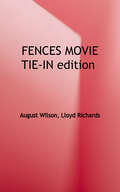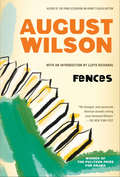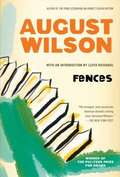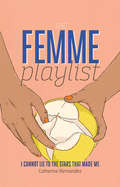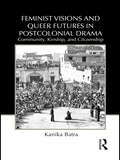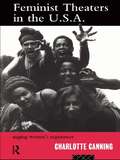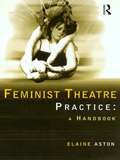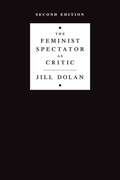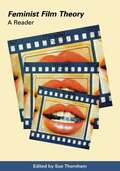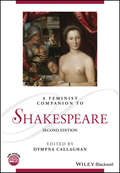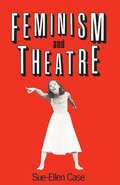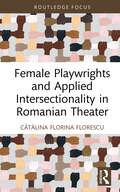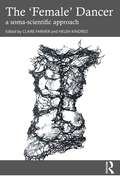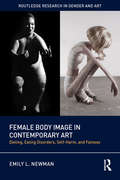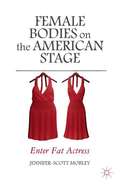- Table View
- List View
Field Guide for Female Interrogators, A
by Coco FuscoThe world was shocked by the images that emerged from Abu Ghraib, the US-controlled prison in Iraq. Lynndie England, the young female army officer shown smiling devilishly as she humiliated male prisoners, became first a scapegoat and then a victim who was "just following orders." Ignored were the more elemental questions of how women are functioning within conservative power structures of government and the military. Why do the military and the CIA use female sexuality as an interrogation tactic, and why is this tactic downplayed and even ignored in internal investigations of prisoner abuse?Combining an art project with critical commentary, Coco Fusco imaginatively addresses the role of women in the war on terror and explores how female sexuality is being used as a weapon against suspected Islamic terrorists. Using details drawn from actual accounts of detainee treatment in US military prisons, Fusco conceives a field guide of instructional drawings that prompts urgent questions regarding the moral dilemma of torture in general and the use of female sexuality specifically. Fusco assesses what these matters suggest about how the military and the state use sex, sexuality, and originally feminist notions of sexual freedom.
Fiddler On The Roof: Based On Sholom Aleichem's Stories
by Joseph Stein Jerry Bock Sheldon Harnick Sholom AleichemThe full text and complete lyrics, as well as photographs from the original production. "One of the great works of the American musical theatre. It is darling, touching, beautiful, warm, funny and inspiring. It is a work of art." -John Chapman, Daily News
Fiction's Truth: The Consequence of Representing Human Suffering, Distress, and Violence in Performance
by Danielle Szlawieniec-HawFiction’s Truth explores professional actors’ lived experiences of representing human suffering, distress, and violence. The book analyses the struggles, issues, and transformations professional actors face when dealing with these portrayals of human life; the personal and interpersonal consequences – both taxing and rewarding – they experience while undertaking these representations; and the forms of attention and care they use to limit the costs and maximize the rewards of their work. The author also includes new key terminology, proposing the term dolesse to capture the experiences of representing human suffering, distress, and violence. Written for entertainment professionals, acting students, and scholars with an interest in acting, theatre, film, and television, Fiction’s Truth addresses the challenges of representing dolesse on stage and in front of the camera, acknowledges the importance of health and wellness in the entertainment industry, and helps remove the stigma that surrounds the consequences these representations often have for actors.
A Few Well-Frozen Worms
by Ronnie BarkerWith a fondness for spoonerisms and double entendres, Ronnie Barker is one of the nation’s greatest comics. Gathered together in this second ‘best of’ volume is a cocktail of his sketches and monologues from every strand of his long and brilliant career.
A Few Stout Individuals (Books That Changed the World)
by John GuareUlysses S. Grant faces mortality and his own failing memory in this “exciting and vivid” play by the Tony Award-winning author of Six Degrees of Separation (Michael Feingold, Village Voice).Arthur Schlesinger calls A Few Stout Individuals “a political extravaganza.” This latest work from award-winning playwright John Guare, author of House of Blue Leaves and Six Degrees of Separation, addresses ideas of history and memory, fame and ignominy, reason and insanity with his trademark Guare imagination. In a Fifth Avenue brownstone in 1880s New York, former president and Civil War general Ulysses S. Grant is penniless, dying of throat cancer, and attempting to finish his memoirs while he’s cajoled and pestered by everyone from his wife and children to Samuel Clemens (aka Mark Twain) and, by way of drug-induced hallucinations, the Emperor of Japan. A thoroughly original play that explores the nature of memory, ambition, and history itself, A Few Stout Individuals is “unmistakably the product of Mr. Guare’s exotic yet very American imagination” (Ben Brantley, The New York Times).
A Few Good Men
by Aaron SorkinThis Broadway hit about the trial of two Marines for complicity in the death of a fellow Marine at Guantanamo Bay sizzles on stage. The Navy lawyer, a callow young man more interested in softball games than the case, expects a plea bargain and a cover up of what really happened. Prodded by a female member of his defense team, the lawyer eventually makes a valiant effort to defend his clients and, in so doing, puts the military mentality and the Marine code of honor on trial.
Fever/Dream
by Sheila CallaghanComedy Characters: 3 male, 3 female, flexible castingChained to his desk in the basement of customer service hell, Segis suddenly finds himself set free in the CEO's penthouse-but is it a dream? This raucous reinvention of Pedro Calderón de la Barca's Life is a Dream gleefully skewers corporate America with razor-sharp wit "Enjoyably stylish [with an] antic pace and witty aesthetic" - Washington Post"Ambitious, often uproarious." - City Paper "A pizzazz-filled concoction that skewers corporatism with a generous supply side of laughs. [Callaghan] is without doubt the purveyor of top-shelf American wit." - Metro Weekly "[Callaghan has] a keen eye for the outlandish. Exudes the kind of infectious zaniness that occasionally attracts cult followings." - Variety "I can't remember the last time a play made me laugh so hard. Between the chuckles and belly laughs, the dialog is surprisingly layered, and gives the audience plenty to think about. Fever/Dream is about as funny as the sharpest Hollywood comedy, and far more rewarding." -BrightestYoungThings.com
The Fever Chart: Three Short Visions of the Middle East
by Naomi Wallace"Naomi Wallace commits the unpardonable sin of being partisan, and, the darkness and harshness of her work notwithstanding, outrageously optimistic. She seems to believe the world can change. She certainly writes as if she intends to set it on fire."--Tony KushnerNaomi Wallace, the rare writer who combines lyrical theatricality with political ferocity, turns her sight to the Middle East, with a new triptych for the stage. Vision One, A State of Innocence, is set--as the playwright describes, in "something like a small zoo, but more silent, empty, in Rafah, Palestine. Or a space that once dreamed it was a zoo"--and features a Palestinian woman, an Israeli architect, and an Israeli soldier. Vision Two, The Retreating World, is of an Iraqi bird keeper from Baghdad and his address before the International Pigeon Convention. Vision Three, Between this Breath and You, takes place after hours in the waiting room of a clinic in West Jerusalem, where a Palestinian father confronts the nurse's aide, a young Israeli woman, about the meaning of the loss of his son and the impact it had on her life. These multifaceted works explore the urgency and complexity of the Middle East's political landscape, through the voices and bodies of the people who inhabit it.Naomi Wallace is a poet and playwright from Kentucky, who currently resides in England. Her numerous awards include the MacArthur "Genius" Fellowship. Her plays, including One Flea Spare, In the Heart of America, and Trestle at Pope Lick Creek, are produced throughout the United States and around the world.
The Festival Cities of Edinburgh and Adelaide
by Sarah ThomassonThe Festival Cities of Edinburgh and Adelaide examines how these cities’ world-famous arts events have shaped and been shaped by their long-term interaction with their urban environments. While the Edinburgh International Festival and Adelaide Festival are long-established, prestigious events that champion artistic excellence, they are also accompanied by the two largest open-access fringe festivals in the world. It is this simultaneous staging of multiple events within Edinburgh’s Summer Festivals and Adelaide’s Mad March that generates the visibility and festive atmosphere popularly associated with both places. Drawing on perspectives from theatre studies and cultural geography, this book interrogates how the Festival City, as a place myth, has developed in the very different local contexts of Edinburgh and Adelaide, and how it is challenged by groups competing for the right to use and define public space. Each chapter examines a recent performative event in which festival debates and controversies spilled out beyond the festival space to activate the public sphere by intersecting with broader concerns and audiences. This book forges an interdisciplinary, comparative framework for festival studies to interrogate how festivals are embedded in the social and political fabric of cities and to assess the cultural impact of the festivalisation phenomenon.
The Fervent Years: The Group Theatre and the Thirties
by Harold ClurmanThe Group Theatre was perhaps the most significant experiment in the history of American theater. Producing plays that reflected topical issues of the decade and giving a creative chance to actors, directors, and playwrights who were either fed up with or shut out of commercial theater, the "Group" remains a permanent influence on American drama despite its brief ten-year life. It was here that method acting, native realism, and political language had their tryouts in front of audiences who anticipated--indeed demanded--a departure from the Broadway "show-biz" tradition. In this now classic account, Harold Clurman, founder of the Group Theatre and a dynamic force as producer-director-critic for fifty years, here re-creates history he helped make with Lee Strasberg, Elia Kazan, Irwin Shaw, Clifford Odets, Cheryl Crawford, Morris Carnovsky, and William Saroyan. Stella Adler contributed a new introduction to this edition which remembers Clurman, the thirties, and the heady atmosphere of a tumultuous decade.
Fences (movie Tie-in)
by August WilsonFrom legendary playwright August Wilson comes the powerful, stunning dramatic bestseller that won him critical acclaim, including the Tony Award for Best Play and the Pulitzer Prize. Troy Maxson is a strong man, a hard man. He has had to be to survive. Troy Maxson has gone through life in an America where to be proud and black is to face pressures that could crush a man, body and soul. But the 1950s are yielding to the new spirit of liberation in the 1960s, a spirit that is changing the world Troy Maxson has learned to deal with the only way he can, a spirit that is making him a stranger, angry and afraid, in a world he never knew and to a wife and son he understands less and less. This is a modern classic, a book that deals with the impossibly difficult themes of race in America, set during the Civil Rights Movement of the 1950s and 60s. Now an Academy Award-winning film directed by and starring Denzel Washington, along with Academy Award and Golden Globe winner Viola Davis.
Fences: A Play (Sparknotes Literature Guide Ser.)
by August WilsonFrom legendary playwright August Wilson comes the powerful, stunning dramatic bestseller that won him critical acclaim, including the Tony Award for Best Play and the Pulitzer Prize.Troy Maxson is a strong man, a hard man. He has had to be to survive. Troy Maxson has gone through life in an America where to be proud and black is to face pressures that could crush a man, body and soul. But the 1950s are yielding to the new spirit of liberation in the 1960s, a spirit that is changing the world Troy Maxson has learned to deal with the only way he can, a spirit that is making him a stranger, angry and afraid, in a world he never knew and to a wife and son he understands less and less. This is a modern classic, a book that deals with the impossibly difficult themes of race in America, set during the Civil Rights Movement of the 1950s and 60s. Now an Academy Award-winning film directed by and starring Denzel Washington, along with Academy Award and Golden Globe winner Viola Davis.
Fences
by August Wilson Lloyd RichardsThe 1987 Winner of the Pulitzer Prize for Drama From August Wilson, author of The Piano Lesson and the 1984-85 Broadway season's best play, Ma Rainey's Black Bottom, is another powerful, stunning dramatic work that has won him numerous critical acclaim including the 1987 Tony Award for Best Play and the Pulitzer Prize. The protagonist of Fences (part of Wilson's ten-part "Pittsburgh Cycle" plays), Troy Maxson, is a strong man, a hard man. He has had to be to survive Troy Maxson has gone through life in an America where to be proud and black is to face pressures that could crush a man, body and soul. But the1950s are yielding to the new spirit of liberation in the 1960s. . . a spirit that is changing the world Troy Maxson has learned to deal with the only way he can. . . a spirit that is making him a stranger, angry and afraid, in a world he never knew and to a wife and son he understands less and less. . .
The Femme Playlist & I Cannot Lie to the Stars That Made Me
by Catherine HernandezFrom masturbation to motherhood, body shaming to burlesque, Catherine Hernandez reveals the reality of living as a queer woman of colour. Set to the music of her life, The Femme Playlist shows what it’s like to be sexy and proud, slutty and loud, queer and brown. I Cannot Lie to the Stars That Made Me is an around-the-campfire guide to mourning and healing for women of colour, written after Hernandez and her daughter left an abusive relationship. As a group of women share their stories around a campfire, they pray for each other and give as much strength as their bodies will allow.
Feminist Visions and Queer Futures in Postcolonial Drama: Community, Kinship, and Citizenship (Routledge Advances In Theatre And Performance Studies #17)
by Kanika BatraIn this timely study, Batra examines contemporary drama from India, Jamaica, and Nigeria in conjunction with feminist and incipient queer movements in these countries. Postcolonial drama, Batra contends, furthers the struggle for gender justice in both these movements by contesting the idea of the heterosexual, middle class, wage-earning male as the model citizen and by suggesting alternative conceptions of citizenship premised on working-class sexual identities. Further, Batra considers the possibility of Indian, Jamaican, and Nigerian drama generating a discourse on a rights-bearing conception of citizenship that derives from representations of non-biological, non-generational forms of kinship. Her study is one of the first to examine the ways in which postcolonial dramatists are creating the possibility of a dialogue between cultural activism, women’s movements, and an emerging discourse on queer sexualities.
Feminist Theatres in the USA: Staging Women's Experience (Gender in Performance)
by Charlotte CanningFeminist Theaters in the USA is a fresh, informative portrait of a key era in feminist and theater history It is vital reading for feminist students, theater historians and theater practitioners. Their continued movement forward will be challenged and enriched by this timely look back at the trials and accomplishments of their predecessors. Canning interviews over thirty women who took part in the dynamic feminist theater of the 1970s and 1980s. They provide first-hand accounts of the excitement, struggles and innovations which formed their experience. From this foundation Cannning constructs a compelling combination of historical survey, critique and celebration which explores: * The history of the groups and their formation * The politics which shaped their work * Their methods and creative processes * The productions they brought to the stage * The reception from critics and audiences
Feminist Theatre Practice: A Handbook
by Elaine AstonFeminist Theatre Practice: A Handbook is a helpful, practical guide to theatre-making which explores the different ways of representing gender. Best-selling author, Elaine Aston, takes the reader through the various stages of making feminist theatre- from warming up, through workshopped exploration, to performance - this volume is organised into three clear and instructive parts: * Women in the Workshop * Dramatic Texts, Feminist Contexts * Gender and Devising Projects. Orientated around the classroom/workshop, Handbook of Feminist Theatre Practice encompasses the main elements of feminist theatre, both practical or theoretical.
The Feminist Spectator as Critic (Second Edition)
by Jill DolanThe Feminist Spectator as Critic broke new ground as one of the pioneering books on feminist spectatorship, encouraging resistant readings to generate feminist meanings in performance. Approaching live spectatorship through a range of interdisciplinary methods, the book has been foundational in theater studies, performance studies, and gender/sexuality/women's studies. This updated and enlarged second edition celebrates the book's twenty-fifth anniversary with a substantial new introduction and up-to-the-moment bibliography, detailing the progress to date in gender equity in theater and the arts, and suggesting how far we have yet to go.
Feminist Film Theory: A Reader
by Sue ThornhamFor the past twenty-five years, cinema has been a vital terrain on which feminist debates about culture, representation, and identity have been fought. This anthology charts the history of those debates, bringing together the key, classic essays in feminist film theory. <p><p> This book maps the impact of major theoretical developments on this growing field-from structuralism and psychoanalysis in the 1970s, to post-colonial theory, queer theory, and postmodernism in the 1990s. Covering a wide range of topics, including oppressive images, "woman" as fetishized object of desire, female spectatorship, and the cinematic pleasures of black women and lesbian women, the book is an indispensable reference for scholars and students in the field.
A Feminist Companion to Shakespeare
by Dympna CallaghanThe question is not whether Shakespeare studies needs feminism, but whether feminism needs Shakespeare. This is the explicitly political approach taken in the dynamic and newly updated edition of A Feminist Companion to Shakespeare. Provides the definitive feminist statement on Shakespeare for the 21st century Updates address some of the newest theatrical andcreative engagements with Shakespeare, offering fresh insights into Shakespeare's plays and poems, and gender dynamics in early modern England Contributors come from across the feminist generations and from various stages in their careers to address what is new in the field in terms of historical and textual discovery Explores issues vital to feminist inquiry, including race, sexuality, the body, queer politics, social economies, religion, and capitalism In addition to highlighting changes, it draws attention to the strong continuities of scholarship in this field over the course of the history of feminist criticism of Shakespeare The previous edition was a recipient of a Choice Outstanding Academic Title award; this second edition maintains its coverage and range, and bringsthe scholarship right up to the present day
Feminism and Theatre
by Sue-Ellen CaseThis classic study is both an introduction to, and an overview of, the relationship between feminism and theatre.
Female Playwrights and Applied Intersectionality in Romanian Theater (Routledge Advances in Theatre & Performance Studies)
by Cătălina Florina FlorescuIn this collection, the author focuses on several contemporary Romanian female playwrights with residencies in Europe and the U.S.: Alexandra Badea, Carmen Francesca Banciu, Alexa Băcanu, Ana Sorina Corneanu, Mihaela Drăgan, Dr. Cătălina Florina Florescu, Dr. Mihaela Michailov, Dr. Domnica Rădulescu, Saviana Stănescu, and Dr. Elise Wilk. In their bold works, written by female playwrights who are academics, activists, and performers, we are invited to discover variations in the modus operandi of the dramatic language itself from metaphorical to matter-of-fact approaches. Furthermore, while all these playwrights speak Romanian, they also think and operate in various other languages, such as Romani, German, French, Italian, and American English. This book facilitates scholars and students to discover contemporary issues related to Romanian society as presented heavily from a feminine angle and to reveal intersectional issues as seen and applied to dramatic characters in a post-communist country from some authors who experienced communism firsthand. The book is also an invitation to reinvent how we teach dramatic literature by offering 20 interactive, exploratory activities.
The 'Female' Dancer: a soma-scientific approach
by Claire Farmer Helen KindredThe 'Female' Dancer aims to question dancers’ relationships with ‘female’ through the examination and understandings of biological, anatomical, scientific, and self-social identity. The volume gathers voices of dance scientists, dance scholars, somatic practitioners, and dance artist-educators, to discuss some of the complexities of identities, assumptions and perceptions of a female dancing body in an intersectional and practically focused manner.The book weaves a journey between scientific and somatic approaches to dance and to dancing. Part I: 'Bodily Knowledge' explores body image, hormones and puberty, and discussions around somatic responses to the concept of the gaze. Part II: 'Moving through Change', continues to look at strength, musculature, and female fragility, with chapters interrogating practice around strength training, the dancer as an athlete, the role of fascia, the pelvic floor, pregnancy and post-partum experiences and eco-somatic perceptions of feminine. In 'Taking up Space', Part III, chapters focus on social-cultural and political experiences of females dancing, leadership, and longevity in dance. Part IV: 'Embodied Wisdom' looks at reflections of the Self, physiological, social and cultural perspectives of dancing through life, with life’s seasons from an embodied approach.Drawing together lived experiences of dancers in relationship with scientific research, this book is ideal for undergraduate students of dance, dance artists, and researchers, as well as providing dancers, dance teachers, healthcare practitioners, company managers and those in dance leadership roles with valuable information on how to support female identifying dancers through training and beyond.
Female Body Image in Contemporary Art: Dieting, Eating Disorders, Self-Harm, and Fatness (Routledge Research in Gender and Art)
by Emily L. NewmanNumerous contemporary artists, particularly female artists, have chosen to examine the idealization of the female body. In this crucial book, Emily L. Newman focuses on a number of key themes including obesity, anorexia, bulimia, dieting, self-harm, and female body image. Many artists utilize their own bodies in their work, and in the act of trying to critique the diet industry, they also often become complicit, as they strive to lose weight themselves. Making art and engaging eating disorder communities (in real life and online) often work to perpetuate the illnesses of themselves or others. A core group of artists has worked to show bodies that are outside the norm, paralleling the rise of fat activism in the 1990s and 2000s. Interwoven throughout this inclusive study are related interdisciplinary concerns including sociology, popular culture, and feminism.
Female Bodies on the American
by Jennifer-Scott MobleyThe fat female body is a unique construction in American culture that has been understood in various ways during the twentieth and early twenty-first centuries. Analyzing post-WWII stage and screen performances, Mobley argues that the fat actress's body signals myriad cultural assumptions and suggests new ways of reading the body in performance.
